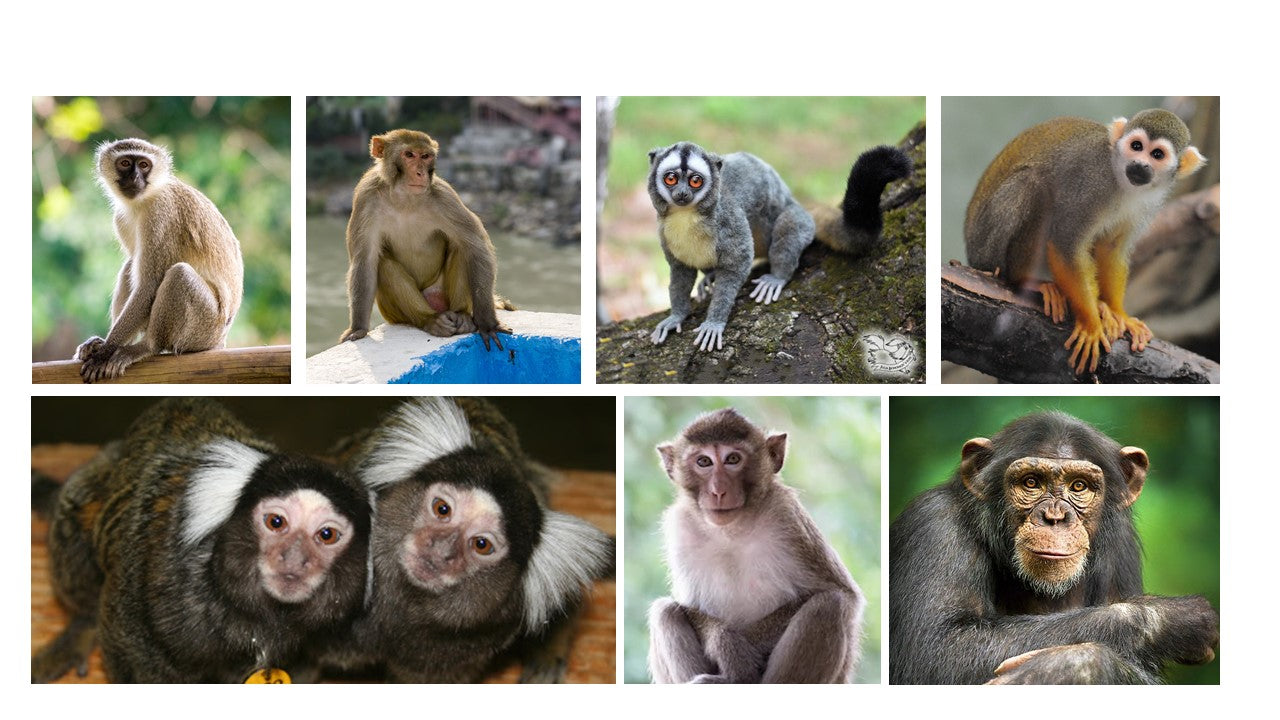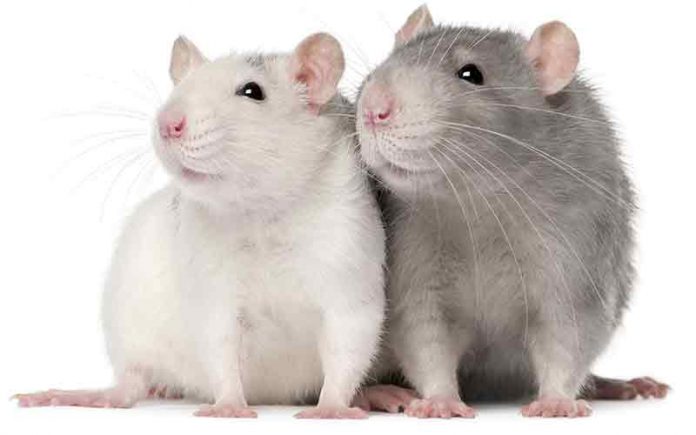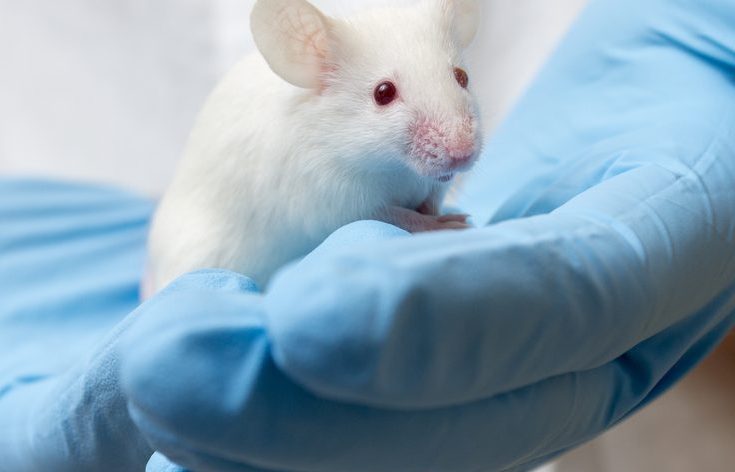However, as with all animal research but even more so for superior species like primates, scientists, veterinarians and technicians have the obligation to follow the principles of the 3Rs, and to provide the highest possible standards of welfare for the animals that are used. The Animal Welfare Act requires that “research facilities develop, document, and follow an appropriate plan for environmental enhancement adequate to promote the psychological well-being of nonhuman primates". Behavioral management programs are an integrated component of colony management, addresses the physical and psychological well-being of NHPs, and includes:
- Socialization
- Environmental Enrichment
- Positive Reinforcement Training
To learn more on enrichment, read our blog on geriatric marmosets!
The goal of behavioral management is to enhance the quality and the utility of the models, by giving them opportunities to express normal species behavior, making them happier and maximizing their health and welfare. Behavioral management is especially important in NHPs as they are intelligent animals that live in complex societies in the wild. They need a stimulating, varied environment that reflects aspects of their natural habitat. Behavioral management includes strategies to encourage natural activity patters, and needs to be integrated within basic animal husbandry and facility design, including caging.

Image from Washington National Primate Research Center https://www.wanprc.org/
Social and Environmental Enrichment for Non-Human Primates
Socialization
In the wild, NHPs spend about 25% of their time socializing with others. In research settings, it is important to provide social opportunities and offer as many activities as possible: give them the choice of who to interact with and how, offer novelty and variability in the interactions. Without those opportunities, NHPs are left with empty time, and start developing abnormal behaviors. It is then very hard to treat and work with an animal that is unsocialized.
Occupational Enrichment
Occupational enrichment can include cognitive challenges such as a offering problems to solve or simple computer-assisted entertainment or video games. Nesting for example is a very large part of the chimpanzee's activity, as they make a new nest every night, so providing nesting material such as wood wool every night will help support that behavior. Be careful to balance human convenience with animal needs, and prioritize animal needs above all (even if it means cleaning nesting material every day!). Provide a variety of toys, plenty of vertical space and perches for climbing and swinging, mirrors, etc...the possibilities are endless.
Sensory Enrichment
Audiovisual enrichment such as videos and music, where the animals can control which channel to play, can be effective in sensory stimulation. Other enrichments such as a water fall wall has been shown to calm and relax owl monkeys for example, while at the same time providing white noise that covers the noises from other animals or cages. Tactile enrichment can be provided by offering a simple blanket or fleece.
Feeding
In the wild, primates spend about 40-60% of their time searching, foraging and gathering food. In research facilities, food is often dumped all at once, which again provides the monkeys with empty time to potentially develop destructive behaviors. Primates should be allowed to forage for their
food, rather than receiving it passively. Provide foraging activities such as fruits at the bottom of a water area, treats under wood chips in the floor, containers (cleaned bleach bottle) filled with newspaper and seeds, or use some sort of devices such as a ring feeder providing food (peanut butter, apple sauce) very little at a time.
ClearH2O's LabGel® Banana is a non-wetting naturally flavored gel, designed to provide enrichment and hydration. It is also an excellent vehicle for medication delivery and can be used in feeding devices
REQUEST YOUR FREE SAMPLE TODAY

Positive Reinforcement Training for Non-Human Primates
Positive reinforcement training (see diagram below) aims to have the animals voluntarily participate in husbandry, veterinary and research procedures, in order to enhance the utility of primates as models for research. Negative reinforcement or punishment (such as food deprivation or electric shocks) should not be used. Start with simple behaviors and more docile animals, and work towards more complex demands.

ClearH2O's FiberBites® and VitaBites® are easy-to-consume nutraceutical gummy treats that can easily be used as rewards, providing added fibers to promote digestive health or vitamins for supportive health, respectively.
REQUEST YOUR FREE SAMPLE TODAY
Rewards can include a variety of food, such as grapes, apples, bananas, and even frozen yogurt...Positive reinforcement allows you to do things better with trained animals than if they were not trained, for example giving them treatments or getting biological samples. Both the trainer and the vet to some extent need to be part of the training. The benefits are multiple :
- minimize anesthesia
- reduce stress for both the trainers/techs and the animals
- increase safety
- increase efficiency
- enriching and productive human interaction
- overall better research!

Let's review a few circumstances where training can be really useful:
Voluntary Treatment
- Diabetes: be able to measure blood glucose by training the animal to give a small blood sample (either with lancet or syringe through a sleeve), and receive their insulin treatment by training them to voluntarily get an injection
- Cough: allowing the animal to get its respiratory antibiotic treatment (3 x 20 minutes /day!) by making a 'kissy face' in the nebulizer
- Cardiac problems: be able to access the data from the cardiac loop recorder implanted in their back by training the animal to turn around and present its back
- Arthritis: get the animal to sit through its treatment (laser, acupuncture)
Cooperative Feeding
Non-human primates are typically reluctant to share their food. The dominant male would chase and hit the subordinates to steal their food. In research settings, how do you make sure every single animal gets their fair share of food? It is quite hard to train an animal to not do something, and much easier to train them to do something that would be incompatible with chasing and stealing: for example, to train the dominant animal to remain in one place while the subordinates are being fed gets him a better/bigger reward (apples instead of cabbage or carrots). The hierarchy and agonistic interactions stay the same except when they are being fed, when they are under the control of the trainers.
Pain Management
In the wild, primates self-medicate by eating certain plants. In research settings, a study showed that, when presented with meloxicam or ibuprofen in clear Gatorade mixed with food coloring (blue or green), chimpanzees preferred meloxicam.

In conclusion, behavioral management strategies are designed to functionally stimulate important characteristics of the natural environment to promote species typical behavior, improve welfare, allow voluntary participation and minimize stress to achieve overall better studies: as well as being more humane, these techniques can also reduce variability in research results and therefore increase their reliability.
Check out our other blog articles on Primates !
References:
(1) Primates in Medical Research - UK Medical Research Council
01/29/2020: How to Manage Barbering Behavior in Breeding Colonies
03/04/2020: Proper Perioperative Procedures in Rodents Promote Faster Recovery
03/30/2020: The Importance of Gut Microbiota in Reproducibility and Translatability in Research
06/01/2020: Pain is a Variable that Affects Data Reproducibility
07/14/2020: Understanding the Grimace Scale as a Pain Assessment for Laboratory Animals




Leave a comment
All comments are moderated before being published.
This site is protected by hCaptcha and the hCaptcha Privacy Policy and Terms of Service apply.